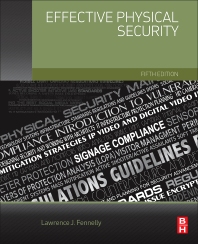Reporting and Administrating: Manage Physical Access Control from Mobile Devices

In this technology-driven and digital world, we have seen more substitutions for manual and physical operations quickly take over our modern life. Mobile devices have eliminated the need for physical alarm clocks, scheduling meetings, setting reminders and more.
In 2015, there was an estimated amount of 4.2 billion worldwide mobile phone users and in 2019, that number is expected to flourish to 4.7 billion. Ninety-four percent of 18-29 year olds have a smartphone, whereas only 46 percent of the 65+ age group have adopted it.
As the number of smarphone users grow, there is a need for a mobile-enabled workforce to employ mobile devices like smartphones and tablets to gain access to public facilities, buildings and more. For instance, Gartner Research estimates that by 2020, 20 percent of organizations will use mobile credentials for access to physical spaces.
After all, using mobile devices instead of physical keys provide many benefits, to administrators and for building users. It is easy, convenient and cost-friendly as well.
Advantages of Mobile Access Control
Steve Van Till, President and CEO of Brivo, says, “Two of the biggest advantages of managing physical access control from mobile devices are better user experience and ease of distribution for credentials. We have found that end users prefer the convenience of mobile credentials over cards, which are easily lost or forgotten. For system administrators, distributing credentials is as easy as sending email.”
How is using mobile devices more secure than using physical keycards? “Mobile credentials are safer for many reasons: encryption, biometrics, ease of revocation, and much lower risk of loss or theft (because people are very attached to their mobile devices),” says Van Till.
What are the risks associated with physical access control methods? The biggest risk for single-factor credentials like most cards and badges is that they can be used by anyone if lost or stolen. Very few companies safeguard them with a second factor, like PINs or biometrics, Van Till says.
Adding new users to access control systems is easy and can be done from anywhere and at any time. Just as important is removing users, especially in industry sectors where employee turnover is high and in many facilities that employ temporary workers and contractors. Moreover, when employees leave, they have to return their physical keycard. Granting them access to facilities through mobile devices is safer and facility managers avoid having to track down workers who resign or are fired, and other temporary workers as well. A lost, misplaced or stolen physical keycards can lead to having to change locks and update security standards.
For facility managers, Van Till says, “Mobile credentials are vastly more convenient to assign and distribute than traditional card credentials. It’s literally as easy as sending an email to someone. In some applications, like multifamily residential where guests passes are a big issue, tenants themselves may be allowed to create and issue credentials to their visitors. That’s a huge convenience for the facility manager.”
For instance, using mobile access control can help administrator with:
- Managing access from anywhere and at anytime
- Granting and disabling access quickly
- Unlocking doors remotely
“Building occupants, in every study I’ve read, prefer the convenience of a credential that’s built into their phones. Nobody wants to carry one more thing. In fact, the trend is just the opposite as more and more “credentialed” transactions in daily life are mobile-enabled, from access control to airline tickets to financial transactions,” Van Till says.
With mobile access control, building users can:
- Enter properties quickly
- Avoid loss of physical key cards
- Enhance user experience
What’s more, mobile devices provide extra security layers, such as biometric authentication and built-in encryptions. Van Till says, “With biometrics built into nearly every smart phone, mobile credentials can easily support a second factor that’s convenient for users. They can use their existing FaceID, for example, to authenticate them before opening a door. Mobile platforms can also be easily updated with new encryption protocols, digital certificates, and the other components of public cryptography, if needed for high security applications.”
Also, consider the financial benefits, such as the reduced costs due to not having to purchase, store and replace physical keycards or employee badges.
Concerns Associated with Mobile Access Control
Although mobile access control is safe, convenient and provides many benefits, there can be some concerns.
First, consider general security risks associated with smartphones. In a study from 2017:
- Less than 75 percent of users locked their smartphones.
- 60 percent of users share their locations on social networking sites.
- 53 percent of participants do not pay attention to access permission requests.
- 90 percent of participants connect to public Wi-Fi networks
- Mobile applications used by 87 percent of participants were not password protected.
- 37 percent of participants had experienced data loss and 63 percent experienced material damages.
Although there are many security risks, not all is bad: there is a significant amount of people who do take appropriate protective behaviors, such as:
- More than 50 percent backed up their data to the cloud.
- More than 50 percent installed smartphone protection programs.
- More than 60 percent protected their Wi-Fi networks with passwords.
- Close to 75 percent did not chat with strangers.
As with any security product and service, it is important that users take the appropriate safety and security methods when adopting mobile access control. Locking phones, not sharing locations via social media, paying attention to which apps they grant access to their data, not connecting to public Wi-Fi networks is essential to the security of any mobile device. Ensuring that data is protected should always be a priority.
Looking for a reprint of this article?
From high-res PDFs to custom plaques, order your copy today!








